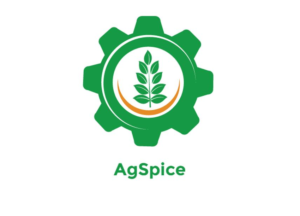 Project: AgSpice – Improvement of Guatemalan Cardamom Value Chain: Industrial Production of Value- Added
Project: AgSpice – Improvement of Guatemalan Cardamom Value Chain: Industrial Production of Value- Added Products and Export Quality Commodity
Products and Export Quality Commodity
Sponsor: Carmen Gomes, Ph.D.
Team Members: Amanda Bast, Susana Cabrera, Anna Medvedeva, Audrey Waddle
Faculty Advisors: Gregory Stark, Carmen Gomes
Known as the “Queen of Spices”, Elettaria cardamomum or cardamom, is a highly valued spice trailing only vanilla in price. The fruits of cardamom are oblong pods containing the small seeds responsible for its characteristic aroma and flavor. It is used to flavor drinks, sweets, and food. Its essential oil is believed to have many health benefits. Since the 2000s, Guatemala is the world’s largest exporter of the spice, accounting for nearly 80 percent of world exports, and producing 35-38 thousand metric tons annually. Although the Alta Verapaz region produces nearly 70% of Guatemala’s national harvest, the individual farmers responsible for most of this production do not have an efficient cooperative system in place, and they lack widespread access to processing technology and good farming practices. The result is low crop yields and often poor quality. Current cardamom processing methods are environmentally unfriendly, relying on wood fires to dry seeds, which in turns leads to deforestation, high carbon dioxide emissions and poor quality. Because the farmers lack direct access to processing technology, they must package their seeds for sale to third party distributors, thus receiving the least profit in the cardamom value-chain.
is low crop yields and often poor quality. Current cardamom processing methods are environmentally unfriendly, relying on wood fires to dry seeds, which in turns leads to deforestation, high carbon dioxide emissions and poor quality. Because the farmers lack direct access to processing technology, they must package their seeds for sale to third party distributors, thus receiving the least profit in the cardamom value-chain.
The AgSpice team, as a service to this community of Guatemalan farmers, took up the challenge to improve the quality of the cardamom produced in Guatemala as their senior design project. The team addressed the quality issue by offering a new design for processing: one that will incorporate specialized machinery and the production of value-added items, such as essential oils and ground cardamom-coffee blends. The proposed design incorporates mechanized color and size separators to speed up the sorting process and reduce the time between harvest and drying, as well as a distillation unit for on-site production of essential oil. In addition, they recommend temperature and humidity control in the storage facility to help maintain quality. To address the issues of deforestation, air pollution and smoky flavor, the team recommends a co-generation gasification process that uses excess cardamom husks and eucalyptus wood chips. The figure illustrates their proposed plan.

 WEF Nexus Research Group
WEF Nexus Research Group